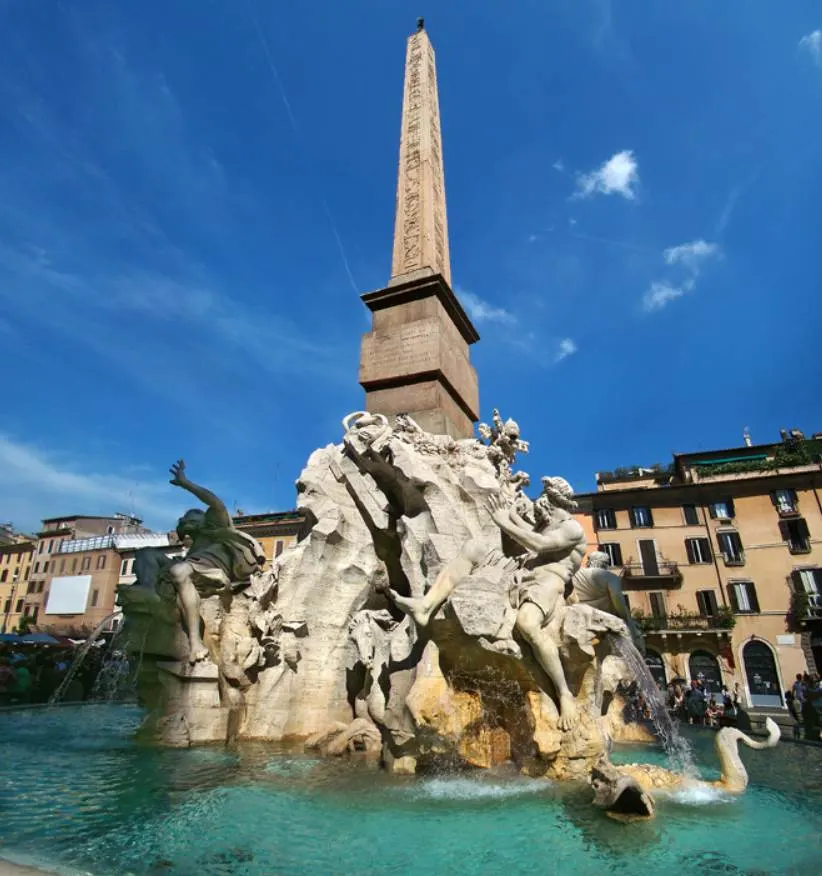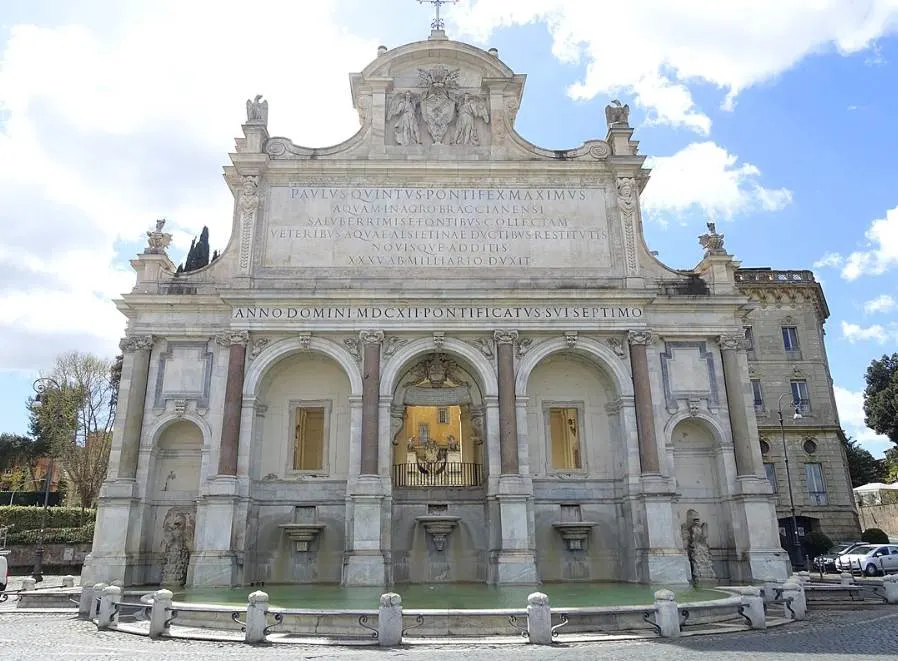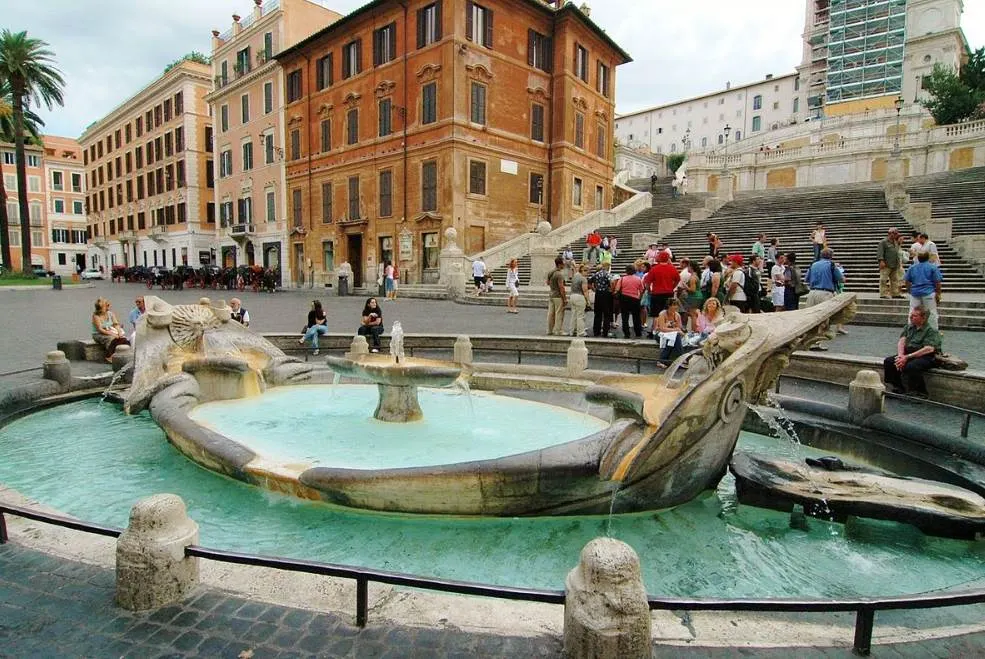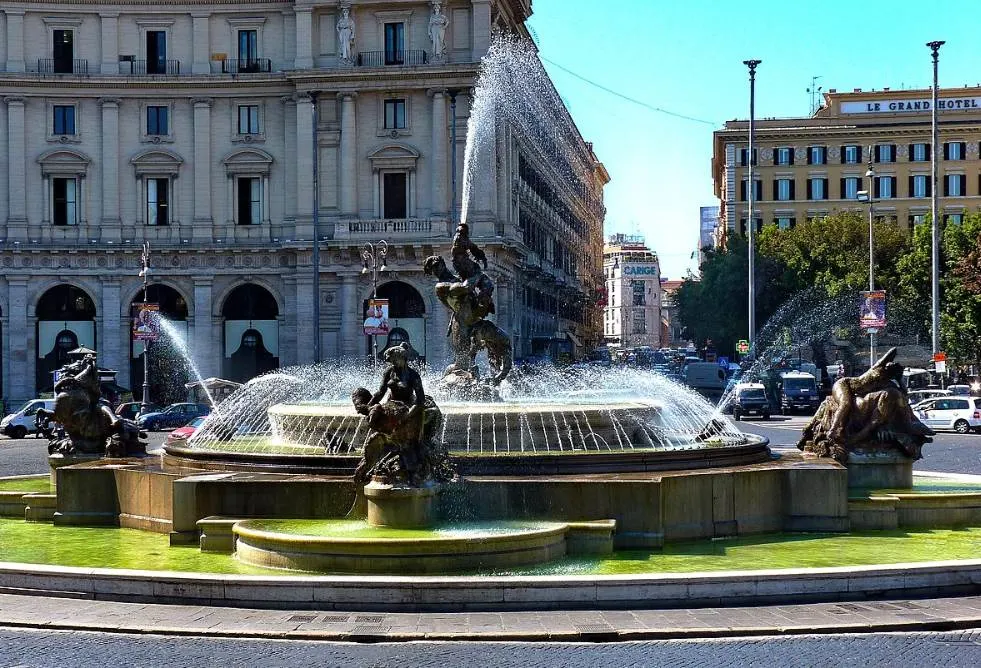Did you know that a man named Gian Lorenzo Bernini (1598-1680) created several of Rome’s most famous fountains?
He also designed St. Peter’s Square and was the main architect of St. Peter’s Basilica in the 17th century, two landmarks in Rome that changed the urban landscape of the city forever.
Not all fountains in Rome were by his hand, though. Very few places in the world feature such an abundance of monumental fountains as this amazing city.
In this article, you’ll discover some of the most famous ones.
1. Trevi Fountain
The Trevi Fountain is without a doubt the best-known of all the famous fountains in Rome. It’s located in the district with the same name and on a square that was named after it as well, just north of Rome’s historical center.
It’s an amazing example of Rococo architecture in Rome and was constructed between 1732 and 1762. It’s still fed by one of the city’s ancient aqueducts and has monumental dimensions. It has a length of 49 meters (161 feet) and a height of 26.3 meters (86 feet).

2. Fontane di Piazza Farnese
Fontane di Piazza Farnese is the name of two identical fountains that are located in front of the Palazzo Farnese. This is an incredible Renaissance building in Rome in which even Michelangelo had a hand in the 16th century.
The fountains were placed here around the time that this amazing palace was constructed and have decorated the square ever since. Their design looks relatively simple until you realize that these are bathtubs that were used at the Baths of Caracalla, an ancient Roman bathhouse.

3. Fontana dei Quattro Fiumi
Fontana dei Quattro Fiumi is arguably the most amazing fountain in Rome that was designed by Gian Lorenzo Bernini, the Baroque artist who left a permanent mark on the city. It’s located on the Piazza Navona in the heart of the city, a square that was constructed on top of the ruins of the ancient Stadium of Domitian.

The fountain was commissioned by Pope Innocent X and is an allegorical representation of the 4 main rivers on the contents that were under papal authority at the time. These include the Nile River, the Amazon, the Ganges, and the Río de la Plata. The Obelisk is a copy of an ancient Egyptian obelisk and dates back to the 1st century.

4. Fontana dell’Acqua Paola
The Fontana dell’Acqua Paola is locally known as “Il Fontanone” or “The big fountain” and the reason for this is easy to understand. It was constructed in the early 17th century and marked the end of the Acqua Paola aqueduct which had been recently restored by Pope Paul V. Both the fountain and aqueduct were named in the pope’s honor.
The ancient Roman aqueduct was originally known as the “Acqua Traiana aqueduct,” a reference to Roman Emperor Trajan who commissioned it in the 2nd century. It’s located on the right bank of the Tiber River and was the first monumental fountain to be constructed in this location.

5. Fontana della Barcaccia
The Fontana della Barcaccia is a relatively small fountain located on the foot of the popular Spanish Steps, not too far north of the Trevi Fountain. It’s located on the Piazza di Spagna or “Spanish Square,” one of the most popular squares in Rome that was named after the Spanish Embassy that is located here.
The fountain was commissioned from Pietro Bernini by Pope Urban VIII in the year 1623. This was the father of Gian Lorenzo Bernini and because it’s fair to assume that his son helped him, it’s considered to be the first fountain in Rome by the hand of the famous artist. The water from the fountain comes from the Acqua Vergine, an aqueduct that was completed in 19 B.C.

6. Fontana dell’Acqua Felice
Fontana dell’Acqua Felice is another monumental fountain in Rome that was constructed as part of a renovation project of ne of the city’s aqueducts. It was completed between 1585 and 1588 and marks the end of the Acqua Felice aqueduct which was restored by Pope Sixtus V. This project was completed in 1586.
It’s located within walking distance northwest of Santa Maria degli Angeli e dei Martiri, an incredible church designed by Michelangelo that incorporates part of the Frigidarium of the ancient Baths of Diocletian (yes, Rome is full of surprises). The central part of the fountain is dominated by a huge statue of Moses which was criticized for being too big at the time.

7. Fountain of Neptune
The Fountain of Neptune is located on the northern end of the Piazza Navona. It was installed in the late 16th century and stood here without sculptures for about 3 centuries. Because the city’s dependence on fountains for drinking water and water for washing diminished in the late 19th-century, sculptures were commissioned to decorate it.
The main sculpture is called “Neptune fighting with an octopus” and was completed in the year 1878. The other sculptures in this group are allegorical representations of a mythological subject called “Nereids with Cupids and walruses,” which is pretty much self-explanatory.

8. Fontana delle Naiadi
Fontana delle Naiadi or “Fountain of the Naiads” is located just southeast of the Fontana dell’Acqua Felice and is the centerpiece of the Piazza della Repubblica. This immense circular square is located on the summit of the Viminal Hill, the smallest of the 7 traditional Hills of Rome.
The fountain was installed in the late 19th century, a time when the square was completely redesigned. The circular fountain is decorated with 4 sculptures that represent naiads, mythological figures that were known as water nymphs associated with fountains, wells, springs, and other bodies of water. The fountain was officially inaugurated in the year 1901.

9. Fountain in Piazza Santa Maria in Trastevere
The Fountain in Piazza Santa Maria in Trastevere is located right in front of the Santa Maria in Trastevere church one of the oldest churches in Rome that dates back to the 12th century. Its roots are even older because a church has been present in this location since the 4th century.
This fountain is considered to be the oldest one in Rome and was probably installed in the 8th century. The current version of the fountain was designed by Donato Bramante (1444-1514), the original architect of St. Peter’s Basilica. Both Gian Lorenzo Bernini and his colleague Carlo Fontana had a hand in the final design of the fountain.

10. Fontana dei Dioscuri
The Fontana dei Dioscuri is an amazing fountain in Rome that faces the Quirinal Palace, the official residence of the President of the Italian Republic. The square in which it’s located is called the Piazza del Quirinale, a reference to this immense palace that dominates the Quirinal Hill in the heart of Rome.
The fountain was named after the original version of the monument which featured the famous twin brothers from Roman mythology Castor and Pollux. These are known together as the “Dioscuri.” The current version of the fountain was completed in the early 19th century, a period in history when the monumental square got its current layout.

